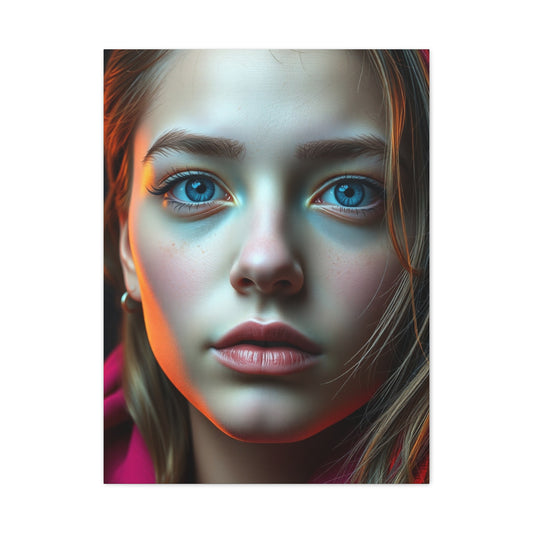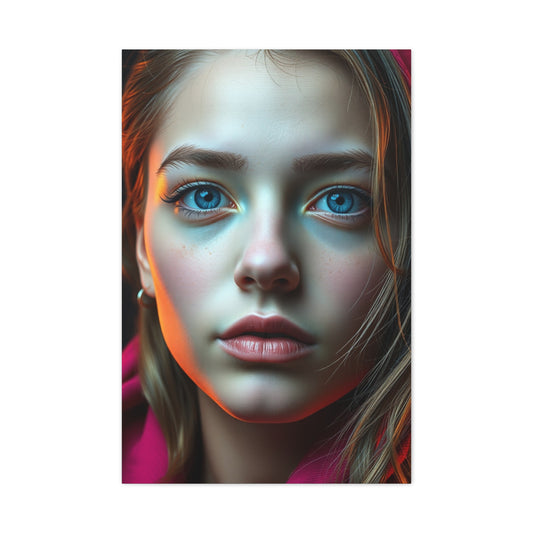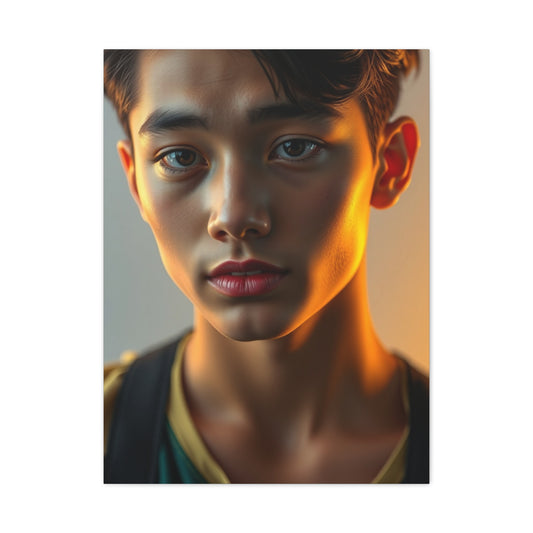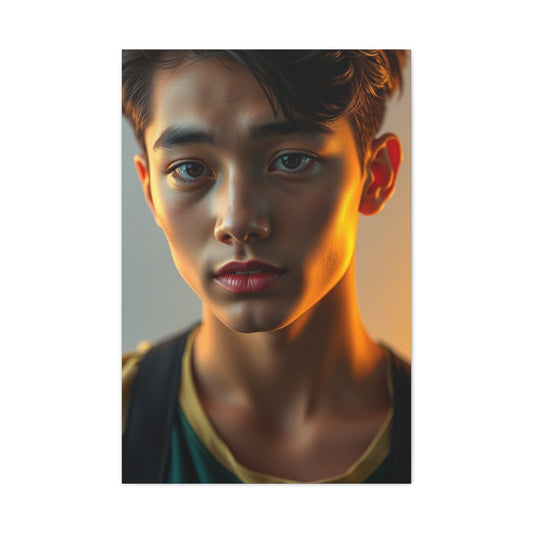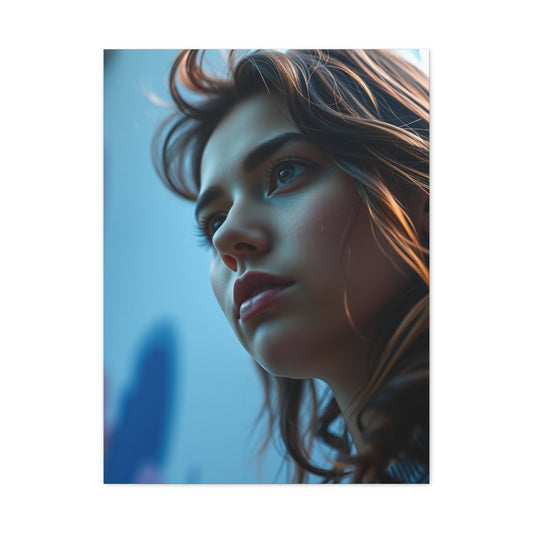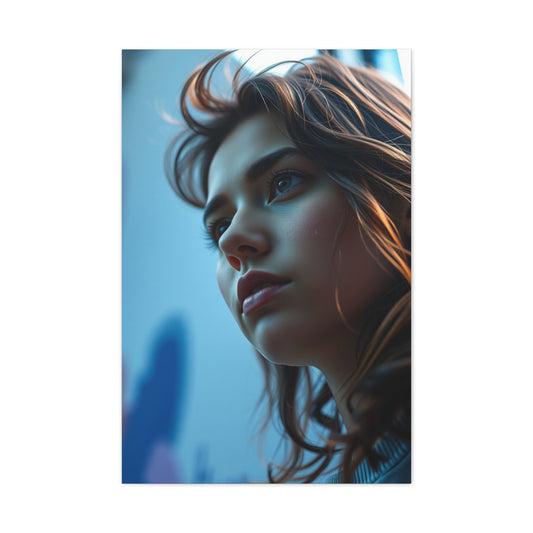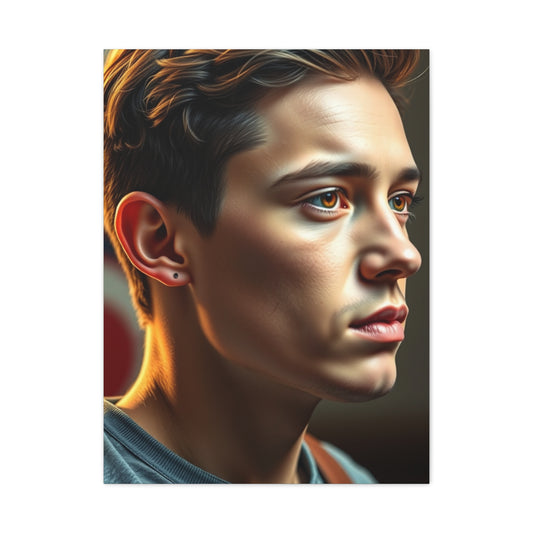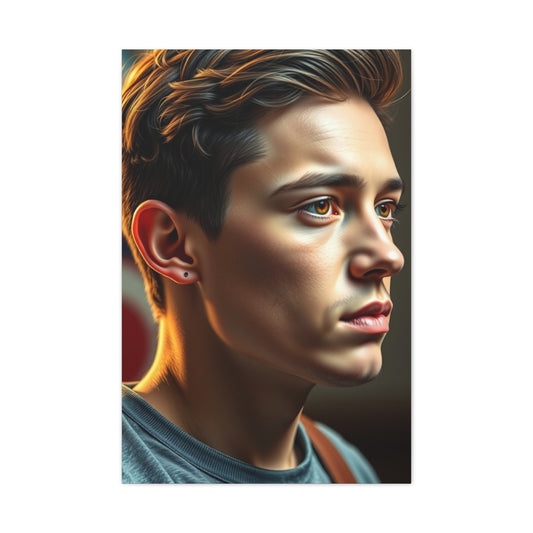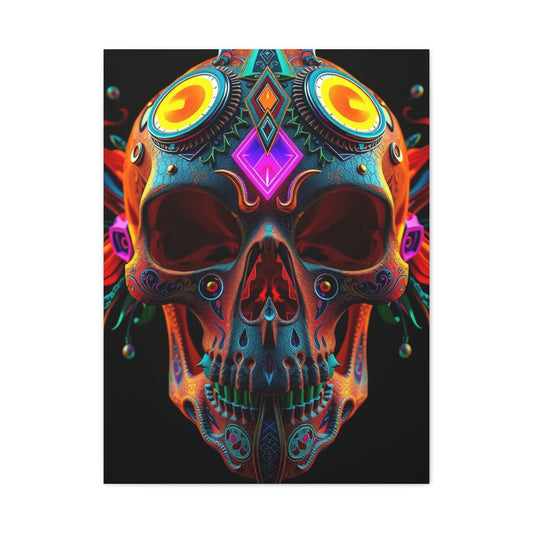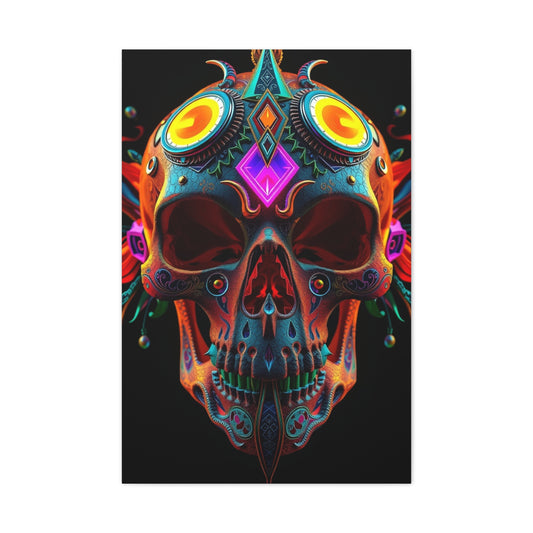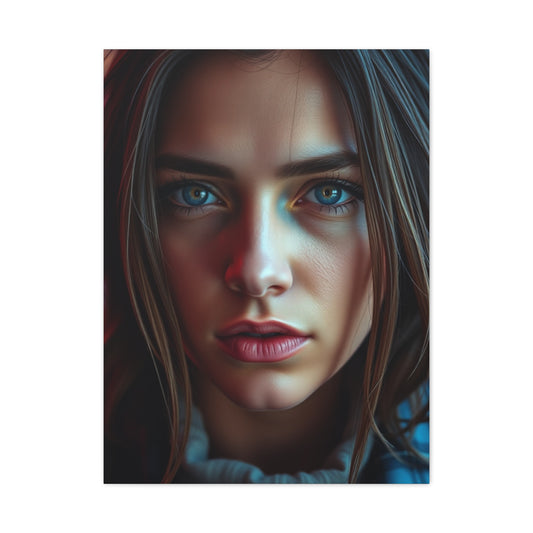Abstract wall art continues to flourish as a pivotal design element in contemporary interiors, elevating walls from blank canvases into deeply expressive focal points. As homeowners, designers, and collectors navigate the evolving design landscape of 2025, abstract art is proving more versatile and emotionally resonant than ever. Its power lies in its ability to reflect individuality, capture ambiance, and seamlessly align with diverse interior styles—from minimalist sanctuaries to maximalist retreats.
Whether you're designing a creative home office, enhancing a cozy reading corner, or making a daring statement in your living area, abstract art serves as the visual vocabulary of modern décor. With sweeping aesthetic shifts and emerging techniques at the forefront, now is the perfect time to explore the latest expressions in abstract wall art that embody both beauty and personality.
Abstract Art Direction for 2025: Trends That Transcend Time
This year marks a reimagining of how abstract art is perceived and incorporated into homes. Beyond decorative value, abstract compositions are now appreciated for their emotional intelligence, cultural relevance, and conceptual storytelling. The movement is being redefined through new styles that fuse heritage, innovation, and personal symbolism, allowing each piece to feel truly one-of-a-kind.
From the gritty influence of urban street culture to the soft fluidity of nature-inspired visuals, abstract art has evolved into a dynamic language—fluid, interpretive, and unapologetically bold. It no longer exists as mere wall décor; it has become a transformative element capable of shifting the mood of entire rooms.
Urban Abstractions: Where Graffiti Meets Fine Art
In 2025, one of the most exhilarating shifts in contemporary abstract art is the profound intersection of graffiti and fine art—a fusion that dismantles traditional boundaries and breathes disruptive vitality into interior spaces. Urban abstract art draws from the pulse of the streets, capturing the energy, tension, and rhythm of city life. It channels the raw, emotive power of public expression into a refined, gallery-worthy format.
This evolving art form is rooted in authenticity. Artists are incorporating elements such as spray paint splatters, stencil motifs, hand-scrawled messages, layered textures, and stark contrasts. The result is a visual language that feels both spontaneous and deliberate, rebellious yet artful. These pieces often depict metaphorical tension—between freedom and structure, chaos and design—making them particularly compelling in curated interiors where contrast is key.
The aesthetic appeal of urban abstract wall art lies in its unpredictable nature. Its asymmetry, jagged contours, and jarring juxtapositions transform blank walls into emotionally resonant canvases. Often layered with sociopolitical undertones, graffiti-infused abstracts can comment on issues like identity, resistance, gentrification, or cultural memory—adding not only visual flair but also a deeper level of meaning to the living environment.
Urban abstractions are especially impactful in loft-style apartments, industrial-themed homes, and creative workspaces, but their reach has expanded. Designers are now integrating these pieces into high-end suburban interiors and modern minimalist spaces to add an unexpected element—what some refer to as “structured rebellion.” When thoughtfully placed, a graffiti-style artwork serves as a visual crescendo that brings personality, dynamism, and conversation to the forefront of any room.
Unlike conventional abstract art that leans toward composition and harmony, urban abstractions thrive in discord. Splashes of neon pinks, bold blacks, electric greens, and smudged silvers ignite energy and emphasize movement. These artworks often resist framing, instead hanging raw-edged or oversized, giving the impression of a mural torn from a city wall and transposed into a domestic sanctuary.
|
Related Catagories: |
Incorporating such vibrant and emotionally charged artwork is a bold choice that reflects the modern homeowner’s desire to embrace imperfections, narratives, and individuality. Urban abstract art doesn’t just complement a space—it disrupts, redefines, and enlivens it. It becomes a personal declaration of style, freedom, and contemporary consciousness.
Organic Abstractions: The Soothing Power of Nature’s Flow
Opposing the bold rebellion of urban motifs, another significant movement gaining traction in 2025 is the rise of organic abstract art. These works embody the tranquil, introspective qualities of the natural world, echoing its rhythms through fluid lines, soft gradients, and imperfect symmetry. Where graffiti abstracts shout, organic abstracts whisper—offering solace, elegance, and an emotional exhale.
Organic abstract pieces are characterized by flowing contours, curvilinear structures, and color palettes inspired by earth, water, and sky. Instead of sharp contrasts and aggressive compositions, they employ gentle transitions and nuanced layers, encouraging calmness and reflection. These artworks often evoke elements like ocean waves, tree rings, mountain silhouettes, or the wind’s ephemeral dance across open fields.
Perfect for serene interiors, organic abstract wall art shines in spaces intended for rest and renewal. Bedrooms, meditation corners, home spas, and reading nooks benefit profoundly from the inclusion of such designs. Their presence tempers the visual noise of modern living, offering a contemplative pause in a fast-paced environment.
Color plays a subtle yet crucial role in these works. Earth tones such as ochre, sage, slate, and mineral white dominate the palette, often blended in a watercolor style or applied in textured layers. This muted chromatic language fosters connection with the environment, reinforcing sustainability and biophilic design principles that are increasingly relevant in today’s architecture.
The forms within organic abstract art are often irregular yet balanced, creating a quiet tension that mirrors natural phenomena. Much like a river meandering through a valley or clouds dispersing in the sky, these pieces convey motion without disruption. They are meditative and mood-setting, designed to harmonize with surroundings rather than overpower them.
These artworks also pair beautifully with natural materials—think linen textiles, wooden accents, stone surfaces, and woven accessories. The synergy between organic art and tactile materials cultivates a layered sensory experience that is both visual and emotional. The artwork doesn't just hang on the wall—it interacts with the space, enhancing its tactile and spiritual warmth.
For homeowners and designers pursuing mindful living, incorporating organic abstract art is more than an aesthetic choice; it’s a holistic design philosophy. It allows for emotional restoration, visual clarity, and a meaningful connection between the inhabitant and the space.
Integrating Contrast: A Balance Between Energy and Tranquility
While urban and organic abstract styles may seem diametrically opposed, contemporary design in 2025 embraces their juxtaposition. Many interior designers are now blending these two aesthetics to strike a balance between vivacity and calm. By layering bold graffiti-inspired pieces in active zones like kitchens or workspaces, and complementing them with nature-infused artworks in bedrooms or lounge areas, homeowners can create environments that cater to different moods and activities.
This stylistic duality reflects the multifaceted nature of human experience—our simultaneous need for expression and introspection, stimulation and serenity. Incorporating both urban and organic abstractions into a single design plan encourages spatial diversity. It allows each room to tell its own story, while contributing to a cohesive narrative that defines the home’s overall ambiance.
To execute this blending effectively, attention must be paid to transitions—through color continuity, material harmony, or shared compositional elements. For instance, an organic piece with a hint of burnt sienna might complement a bold urban work that shares a similar undertone. Likewise, using neutral wall colors and natural lighting helps integrate disparate art styles into a unified visual language.
The contrast also invites homeowners to explore emotional zoning within their interiors. A high-energy living room may feature dynamic strokes and urban textures, while a tranquil study or bedroom may lean toward fluid lines and soft hues. This approach ensures that each part of the home serves its intended emotional function, supporting wellness, creativity, and connection.
The Emotional Dimension of Abstract Art in Modern Interiors
Ultimately, the true power of abstract art—whether rooted in street culture or the serenity of nature—lies in its emotional resonance. In 2025, interior design is less about perfection and more about intentionality. Homeowners are choosing art that reflects their values, memories, and aspirations. Abstract pieces allow for this connection without prescribing meaning; they invite interpretation, introspection, and engagement.
Urban abstract art empowers spaces through its unfiltered intensity. It speaks to identity, resistance, and transformation. It’s ideal for those who seek to challenge convention and energize their surroundings.
Conversely, organic abstract art invites stillness and contemplation. It facilitates emotional grounding and encourages a deeper connection to the self and the environment. It suits individuals who prioritize mental clarity, emotional wellness, and natural harmony.
Both styles, when integrated with thought and authenticity, turn a living space into something more profound—a reflection of the people who inhabit it. By embracing the full spectrum of abstract expression, homeowners create not only visually dynamic interiors but emotionally intelligent homes.
Watercolor Abstracts: Ethereal Expressions of Mood
Watercolor abstract art is making a strong comeback in 2025, captivating art enthusiasts with its fluidity, translucence, and emotional depth. This medium is known for its ability to evoke moods that are both introspective and ethereal. What sets watercolor abstract art apart from other forms is its delicate and spontaneous nature. The way watercolor pigments blend and flow across the canvas is almost magical—creating a sense of fragility and imperfection that resonates deeply with the viewer.
The essence of watercolor abstract art lies in its unpredictability. Unlike acrylics or oils, which can be manipulated with precision, watercolor allows for a more organic, free-flowing interaction between pigment and water. The colors often bleed and merge in unexpected ways, resulting in gradients and washes that defy structure. This fluidity makes watercolor ideal for expressing emotion, as each composition captures the transient nature of feeling—whether it’s a fleeting moment of joy, the quiet sorrow of a rainy day, or the peaceful calm found in nature.
In 2025, watercolor abstracts are no longer just for traditional settings; they’re being embraced across a wide range of modern interior designs. These artworks serve as excellent additions to spaces where serenity and mindfulness are prioritized, such as meditation rooms, bedrooms, and reading nooks. The muted tones and smooth transitions found in watercolor art help create a calming atmosphere that invites the viewer to relax, reflect, and unwind. With their soft edges and gentle color flows, these pieces add a sense of elegance and understated sophistication to any room.
One of the most compelling aspects of watercolor abstract pieces is their ability to interact with light. The transparency of the medium allows light to pass through layers of pigment, creating a dynamic play of shadows and highlights. This movement enhances the overall experience of the artwork, as it changes throughout the day depending on the natural light in the room. As such, watercolor abstracts offer not just a static visual experience but a constantly evolving one, allowing the artwork to adapt and resonate differently in varying contexts.
Color choices in watercolor abstracts also play a significant role in their ability to communicate mood and emotion. Artists often use delicate gradients, where the pigments subtly shift from one color to another, allowing for a seamless transition of hues that evokes calmness or melancholy. Soft blues, lavenders, pale yellows, and greens dominate the palette, often mimicking the gentle tones of nature or the tranquility of a quiet dawn. These compositions exude a sense of peace, making them perfect for spaces designed for relaxation or reflection.
However, some artists have taken a bolder approach with their watercolor abstracts, incorporating more saturated tones and dynamic color transitions. Deep blues blending into rich purples or vibrant pinks melting into fiery oranges create more dramatic visual statements. These pieces, though still imbued with the characteristic fluidity of watercolor, invoke stronger emotional responses—inviting the viewer to immerse themselves in a more intense, yet still ethereal, emotional journey.
Watercolor abstract art allows for a certain level of interpretation—its imperfection and fluidity leave room for personal reflection. What one viewer sees as a calming sky, another may interpret as the quiet rhythm of ocean waves. This subjective quality is what makes watercolor so compelling. It encourages introspection, offering each observer a unique experience and connection to the art. Whether in a private room meant for contemplation or as the focal point of a larger, more social space, watercolor abstracts offer a depth of engagement that is rare in more rigid or structured art forms.
Color in Command: The Rise of Expressive Palettes
In 2025, the role of color in abstract art has evolved from a passive background element to a central driving force. Color is now seen as the narrative of the piece itself, communicating emotions, setting the tone, and defining the entire atmosphere of a room. Artists are increasingly experimenting with bold, expressive color choices, pushing the boundaries of traditional color palettes and opting for high-contrast, unexpected combinations that captivate the viewer.
Gone are the days when abstract art simply relied on subdued or monochromatic tones to fill space. Today’s abstract artists are embracing vibrant, daring color schemes that create intense emotional responses. Colors such as fiery vermilion, electric indigo, and radiant marigold burst onto the canvas, energizing the surrounding space with their bold presence. These works immediately command attention and set the tone for the room, infusing it with energy and vibrancy.
In areas like living rooms, kitchens, or entertainment zones—spaces where energy and interaction are paramount—bold abstract art with saturated hues serves as the perfect conversation starter. The dramatic palette of deep blues, fiery reds, and vibrant yellows brings movement and excitement into the space. These colors act as a visual stimulus, encouraging interaction and infusing the room with vitality. A well-placed piece with this intense use of color can instantly transform an otherwise neutral, minimalistic room into a dynamic, personality-filled environment.
However, the rise of expressive color palettes in abstract art is not limited to high-energy tones. There is also a growing trend of exploring softer, more nuanced color combinations that evoke subtle moods and provide a sense of calm. Colors like soft taupe, muted slate, and blush pink have become popular choices for spaces designed to nurture relaxation and introspection. These pastel and earth-tone palettes are often used in minimalist or zen-inspired designs, where the goal is to create an atmosphere of peace and simplicity.
Subtle hues and gradients of color allow abstract art to blend seamlessly into environments that are centered around mental clarity and tranquility. The soft pinks, gentle blues, and creamy whites of these pieces can transform a space into one that feels open, airy, and emotionally restorative. In bedrooms, meditation rooms, or home offices, these toned-down works act as grounding elements, promoting relaxation and helping to reduce stress.
The ability of abstract art to adapt to different emotional and spatial needs is one of its greatest strengths. Whether through vivid, attention-grabbing colors or more subdued, harmonious tones, abstract art with an expressive color palette can create a distinct atmosphere that aligns with the overall design goals of the space. These pieces often transcend the boundaries of art, becoming integral parts of the room’s personality.
Moreover, the rise of color in abstract art is indicative of broader cultural trends in 2025. As people continue to seek out environments that reflect their inner selves, abstract art has become an avenue for self-expression and emotional release. Artists are using color to convey personal stories, social issues, and emotional states, inviting the viewer into a deeper conversation about the state of the world and the human condition. The act of choosing specific color palettes for abstract art is no longer merely aesthetic; it’s an intentional choice to communicate and provoke emotion.
The Emotional Impact of Color in Abstract Art
In abstract art, color is not just a visual element—it's an emotional language. In 2025, artists and designers are fully embracing the emotional power of color, using it to evoke specific responses from the viewer. Bold, primary colors like red and yellow can evoke feelings of energy, passion, and warmth, making them ideal for spaces where social interaction and vitality are desired. These colors are particularly effective in public areas of the home such as living rooms, dining rooms, and entryways, where they encourage engagement and foster a sense of excitement.
On the other hand, cooler tones like blue and green are often associated with tranquility, relaxation, and calm. These colors are ideal for spaces where rest and introspection are paramount, such as bedrooms, libraries, and home offices. Cool colors help to lower stress levels and create a soothing atmosphere that promotes focus and mental clarity. Watercolor abstracts, with their smooth transitions between shades of blue, teal, and lavender, are especially effective in these settings, as they create a serene environment conducive to reflection.
The emotional impact of color is further amplified when combined with the fluid nature of abstract art. As the pigments blend and shift across the canvas, they create an evolving visual experience that resonates with the viewer on a deeply personal level. The dynamic movement of color in an abstract piece can mirror the complexities of human emotion, allowing the viewer to engage with the artwork not just as an observer, but as a participant in an ongoing emotional dialogue.
In 2025, the exploration of color in abstract art represents a broader shift towards emotional intelligence in design. Color is now being used intentionally to foster specific feelings, whether it’s the energy of a bright red in a dining room or the calm of a pastel blue in a bedroom. Abstract art, with its vast array of color possibilities, offers an ideal platform for this emotional exploration. It invites viewers to connect with the work on a visceral level, experiencing the full spectrum of human emotion through the interplay of light, pigment, and form.
The Future of Color in Abstract Art
The future of color in abstract art looks incredibly promising, with artists continuing to push the boundaries of chromatic expression. As digital tools become more advanced, artists are able to experiment with new techniques that blend traditional mediums with technology, creating even more vibrant and dynamic color compositions. The integration of technology into the creative process also allows for the creation of interactive pieces that change in response to light, temperature, or even touch, creating an immersive experience for the viewer.
In the years to come, color in abstract art will continue to evolve alongside the cultural, emotional, and technological shifts of society. As the world becomes more interconnected, the emotional power of color will play an increasingly central role in how we experience and engage with art. Abstract art, with its bold use of color, will remain at the forefront of this movement, offering new ways to explore, express, and understand the emotional spectrum of the human experience.
Abstract as Narrative: Telling Your Story Through Art
In 2025, abstract art is taking on a more profound and personal role within contemporary home design. What was once purely decorative is now evolving into a tool for storytelling. No longer confined to shape and form alone, abstract art is becoming a vehicle for conveying personal, cultural, and political narratives, offering a canvas on which stories of identity, struggle, and triumph are told. Artists are embedding deeper emotional layers, drawing from ancestral traditions, social movements, and internal reflections, thus transforming abstract works from visual creations into powerful narratives.
This shift marks a departure from the traditional perception of abstract art as simply a composition of colors and shapes. Instead, abstract art is now seen as a form of emotional communication that can transcend language. Through deliberate choices in color, texture, form, and composition, artists are able to express experiences and ideals that speak directly to the viewer’s heart. These works are not just representations of ideas—they are extensions of the artist’s own journey, inviting the observer to step into that narrative and engage with it on an intimate level.
One of the most compelling aspects of abstract art in 2025 is its ability to tell multiple stories at once. Unlike more literal forms of art, where the meaning is often fixed and easily interpretable, abstract art offers a fluidity of meaning. The same artwork can evoke vastly different responses from different viewers. This open-endedness is what makes abstract art such a powerful narrative tool. A swirl of red and black might be interpreted as the turmoil of a personal struggle by one person, while another may see it as a symbol of societal conflict or historical upheaval. It’s this fluidity and depth of meaning that makes abstract art timeless, allowing it to resonate across generations and cultures.
|
Related Catagories: |
For homeowners, this new approach to abstract art presents an opportunity to curate their living spaces with pieces that reflect their personal stories. Abstract art becomes a visual extension of the home’s emotional landscape, allowing residents to express their inner worlds without words. Whether depicting the complexities of personal identity, the journey of overcoming hardship, or the celebration of cultural heritage, abstract art can encapsulate deeply personal experiences in a way that no other form of decoration can. Homeowners are no longer simply choosing art based on aesthetics but are selecting pieces that mirror their own narratives, struggles, and triumphs.
Furthermore, abstract art as narrative also invites collaboration and engagement. Rather than simply hanging on the wall, these works become points of connection for viewers, provoking thought, conversation, and introspection. As the viewer steps back to take in the work, they are invited to interpret it, to reflect on their own experiences, and to bring their own emotions into the art. This creates a dynamic relationship between the artwork and its audience, as the piece evolves with every new interpretation.
This narrative-driven approach also extends beyond the artist’s own life story. Abstract art increasingly reflects broader cultural movements and social change. Political motifs, struggles for equality, environmental concerns, and reflections on the state of the world are woven into the compositions, allowing abstract art to function as a visual dialogue about the issues that matter most. For homeowners, this opens the door to owning art that is not only personal but also socially relevant, helping them express solidarity with causes and movements they believe in.
In this way, abstract art becomes a reflection of the times, offering a visual language that speaks to both the personal and the collective. It serves as a mirror for society, offering insight, reflection, and critique, while at the same time enabling individuals to express their own unique stories and emotions.
The Future of Wall Art: Emotional Aesthetics in Contemporary Homes
As we move further into 2025, abstract wall art is evolving in response to a broader cultural movement towards intentional living. The home, as a sanctuary and a reflection of personal identity, is more than just a place to live—it’s an experience, a feeling, and an emotional landscape. Art, therefore, must do more than simply decorate; it must serve a functional and emotional role within the space. Abstract art, with its capacity to convey complex emotions, serves as the perfect tool to shape the atmosphere of modern homes.
In the future, abstract art will continue to transcend traditional boundaries. The works of 2025 will be increasingly interactive, with new technological advancements allowing for multi-dimensional, immersive experiences. Modular, multi-panel compositions will take center stage, allowing for custom arrangements that adapt to the size and mood of the room. This trend towards modularity in abstract art reflects a desire for flexibility and personal expression in modern interior design. With the ability to rearrange, expand, or contract artworks to fit the changing needs of a space, homeowners will have greater control over how their art is experienced and interacted with.
The future of abstract wall art is also closely tied to digital advancements. Digital-to-canvas transfers, which merge traditional painting techniques with digital technology, are becoming more popular. These artworks combine the precision and versatility of digital tools with the emotional depth of hand-crafted artistry, resulting in pieces that are both visually stunning and technologically innovative. In addition, interactive digital artworks that change based on viewer input—such as color shifts or light alterations—are making their way into home décor. These pieces offer an entirely new dimension to abstract art, engaging viewers in a sensory and intellectual dialogue that evolves over time.
In 2025, the impact of abstract art on a space will be far more than a simple visual experience. The art will be designed to evoke specific emotions—whether that’s joy, serenity, or contemplation. Homeowners will continue to seek out art that resonates with their daily lives, choosing pieces that complement their lifestyles and emotional needs. This means that art will not only enhance the aesthetic of a room but will also play an integral role in the overall ambiance, contributing to a deeper sense of emotional wellness.
As abstract art continues to evolve, its role within the home will shift from that of mere decoration to that of emotional architecture. It will no longer be just a decorative accessory but a key component in the creation of a space that is intentionally designed to support well-being and personal expression. This emotional resonance will be a central theme in the way abstract art is selected and displayed in the future.
The future of abstract art will also see the continued rise of large-scale immersive murals and installations, which have become popular in both public and private spaces. These massive, multi-dimensional artworks immerse the viewer, engaging them in an emotional experience that transcends traditional wall art. For modern homes, these installations will serve as statement pieces, allowing homeowners to make bold, personalized choices in their décor. As spaces continue to grow larger and more open, these immersive artworks will help anchor the room, giving it focus and purpose.
Emotional Resonance and Art: A Deep Connection with the Home
One of the most compelling reasons why abstract art continues to dominate interior design in 2025 is its ability to forge an emotional connection with the viewer. Modern homeowners are increasingly selecting art that does more than just fill a blank space—it is art that resonates with their personal feelings, experiences, and beliefs. As the home evolves into a space for self-expression and emotional healing, abstract art becomes a vehicle for personal exploration and a symbol of identity.
In a world that often feels disconnected, abstract art allows individuals to reconnect with their emotions, offering a therapeutic outlet for feelings that may be difficult to articulate. Whether through the dramatic tension of jagged lines or the calm serenity of flowing shapes, abstract art offers a language of its own that transcends words. This unique ability to evoke complex emotional responses through color, form, and texture is what makes abstract art so effective in shaping modern interiors.
Incorporating abstract art into your home isn’t just about choosing a beautiful piece to hang on the wall. It’s about selecting a work that aligns with your emotions, values, and aspirations. Whether it’s a piece that reflects personal triumph, captures a moment of introspection, or speaks to a larger cultural or political cause, abstract art allows homeowners to showcase their inner world. These artworks become more than just decorations—they become expressions of identity, capturing the homeowner’s journey, beliefs, and emotional state.
With the continued rise of personalized living spaces, abstract art will remain at the forefront of interior design. As homeowners seek to create environments that are not just beautiful but meaningful, abstract art offers the perfect balance of emotional depth and visual impact. It transforms rooms into emotional landscapes, enhancing the space and the experience of those who live within it.
Abstract Art Styling Tips: Transforming Spaces with Purpose
Choosing the right abstract art for your home involves more than color preference or frame style. It’s about creating cohesion, maintaining proportion, and amplifying mood. Here’s how to optimize your wall space with deliberate design thinking.
Why Abstract Art Enhances Every Room
One of the most powerful characteristics of abstract art is its universality. It transcends spatial limitations, complementing nearly every room and layout. Whether you're working with a minimalist studio, a traditional parlor, or a contemporary open-concept plan, abstract pieces create a unique visual rhythm that anchors the space.
These artworks don't require context—they create it. By allowing abstraction to lead the eye and provoke imagination, you establish a creative pulse that runs through your entire home.
Color Strategy: Evoke Emotion Through Hue
Vibrant abstract works bursting with scarlet, fuchsia, or azure are ideal for communal zones like lounges and foyers. These pieces energize social settings and serve as instant conversation starters. Meanwhile, muted artworks that feature celadon, lilac, or dove gray are more suitable for contemplative environments, promoting emotional grounding and visual rest.
Geometry and Fluidity: Form Defines Mood
Geometric abstractions, composed of rigid lines and symmetrical balance, offer structure and intentionality. They’re particularly effective in office spaces or minimalist designs where precision and control are central.
On the other end of the spectrum, fluid and irregular shapes evoke organic growth and freedom—perfect for more relaxed and eclectic spaces. These pieces encourage spontaneity, making rooms feel dynamic and less curated.
Strategic Placement: Elevating Visual Flow
The impact of abstract art is heavily influenced by placement. In living rooms, position artwork 6 to 12 inches above the sofa for optimal visibility. In dining areas, center a bold piece to invigorate mealtime gatherings. For transitional spaces like hallways or staircases, vertical art or grouped series help guide the eye along the journey.
In bedrooms, choose tranquil compositions and hang them at eye level above the headboard to enhance the restful atmosphere. Gallery walls composed of similarly themed abstracts work beautifully in open spaces, allowing each artwork to contribute to a unified visual conversation.
Framing Options: Defining or Liberating the Canvas
Framed artworks offer a more polished, formal appearance, making them suitable for structured spaces. Choose natural wood, matte black, or metallic frames that align with your existing interior palette.
Unframed canvases, especially those with painted edges or raw wraps, deliver a modern, minimalist sensibility. This frameless look allows the art to breathe, making it ideal for open, airy spaces or creative studios.
Cohesion Through Theme: Aligning Art with Interiors
The key to seamlessly incorporating abstract wall art is visual alignment. In a sleek, modern interior, choose pieces with a monochromatic palette and geometric motifs. For bohemian or layered spaces, select expressive works with earthy hues and diverse textures. Traditional homes benefit from abstract art that introduces subtle contrast without competing with ornate furnishings.
Whether your décor theme leans industrial, coastal, rustic, or futuristic, there’s an abstract style that can not only complement but elevate the overall aesthetic.
Living Room Spotlight: Abstract Art as the Centerpiece
The living room serves as the nucleus of most homes, making it a natural canvas for statement-making artwork. In 2025, large-scale abstract paintings are redefining focal points. Opt for canvas sizes that take up approximately two-thirds of the wall space above the sofa for visual balance.
Play with materials—acrylics with mixed media, metallic accents, or layered textiles—to bring depth to the space. Whether your living room leans casual or formal, abstract art provides a visual anchor that reinforces both mood and style.
Timeless Appeal of Blue Abstracts
Blue remains a perennial favorite in interior design, and abstract art is no exception. From soft mist to deep indigo, this versatile hue symbolizes calm, confidence, and clarity. In 2025, expect to see more dual-tone blue compositions that create dimension through layering and contrast.
Pair deep cobalt works with linen and wood textures for a coastal-chic atmosphere, or use lighter sky blues alongside whites and silvers for a minimalist Scandinavian vibe. Blue abstract art is as flexible as it is emotionally resonant.
Scale and Sizing: Art that Fits Just Right
Proper sizing ensures your artwork harmonizes with its environment. For larger rooms, canvases measuring 48 inches or more make bold, grounding statements. For smaller spaces, opt for a series of smaller pieces with cohesive elements like color, form, or theme.
Always hang art so that the center sits approximately 57 to 60 inches from the floor. Use painter’s tape to mark the edges before installation to preview balance and placement.
Final Thoughts
As we embrace the evolving landscape of interior design in 2025, abstract wall art stands at the forefront of personal and artistic expression. No longer confined to mere aesthetics, abstract art has become a powerful tool for storytelling, emotional resonance, and creative individuality within our living spaces. It invites homeowners to move beyond trends and instead curate environments that reflect who they are—through color, form, texture, and meaning.
Whether you are drawn to the rebellious energy of urban graffiti-inspired pieces, the gentle flow of organic lines, the translucence of watercolor tones, or the bold vibrancy of color-forward compositions, abstract art offers an open canvas for self-discovery. Its adaptability means that regardless of your design style—be it minimal, eclectic, rustic, or ultra-modern—there is an abstract artwork that can both elevate and harmonize your space.
Incorporating abstract wall art isn’t just about decoration; it’s about defining mood, enhancing spatial flow, and fostering deeper connections with the spaces we inhabit. When thoughtfully chosen and strategically placed, abstract art can energize, soothe, or inspire—transforming ordinary walls into dynamic reflections of emotion and experience.
As we look to the future, abstract art will continue to be a mainstay in home décor—not because it follows trends, but because it transcends them. It speaks to the timeless desire to make our surroundings more meaningful, more expressive, and ultimately more human. In a world that often feels chaotic, abstract art offers a personal sanctuary, a visual language, and a soulful signature that turns a house into a home.












